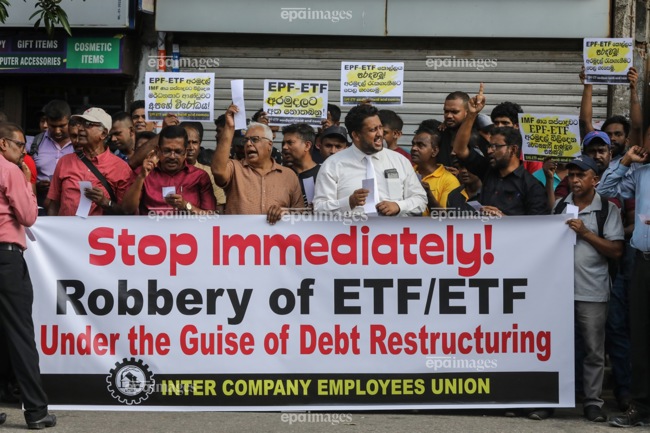By East Asia Forum/ Prema-chandra Athukorala
“The proposed partial DDO is highly inequitable. It passes on most of the burden of adjustment onto salary owners and ordinary people while sparing the banking sector and treating international creditors and individual domestic creditors generously.”
When the IMF approved Sri Lanka’s Extended Fund Facility Programme (EFFP) the country’s stock of public debt was US$82 billion — 128 per cent of GDP — with domestic and foreign debt accounting for approximately equal shares. Annual interest payments were eating up nearly two thirds of government revenue and domestic debt accounted for the bulk of this interest burden.
“A unique feature of the DDO program compared to domestic debt restructuring programs in most other countries is its partial coverage. It covers only public debts of three broad categories”
A group of institutional investors — accounting for a large share of Sri Lanka’s outstanding US$12.5 billion in international sovereign bonds — had already informed the IMF that they were ready for restructuring debt subject to concurrent restructuring of domestic debt. Despite this, the EFFP, initially focussed solely on foreign debt, giving the misleading impression to the Sri Lankan public that that there would be no restructuring of domestic debt as part of the EFFP.
It was only after the implementation of the EFFP had commenced that the restructuring of domestic debt began. The IMF emphasised ‘satisfactory progress’ in restructuring foreign debt as a key milestone for releasing the second tranche of the EFFP loan in September or October 2023. At the same time, the holders of international sovereign bonds reiterated equal treatment of foreign and domestic creditors as a prerequisite for their participation in debt restructuring. The government, therefore, announced the domestic debt optimization (DDO) program on 29 June 2023 as an appendage to the original EFFP.
“The favoured treatment of commercial banks and domestic government security holders compared to the EPF is an inequitable distribution of the burden of debt restructuring. The savings of salary owners in the EPF are meant to provide a reasonable post-retirement income.”
Placing the entire burden of domestic debt restructuring on ‘captive’ institutions — the Central Bank and the EPF, which is managed by the monetary board of the Central Bank — is an easy option for the government. But the favoured treatment of commercial banks and domestic government security holders compared to the EPF is an inequitable distribution of the burden of debt restructuring. The savings of salary owners in the EPF are meant to provide a reasonable post-retirement income. Their current real incomes have already been cut by high inflation and higher taxes — now the DDO will cut their future incomes as well.
The government has given a number of justifications for the exclusion of the banking sector from the DDO. These include the higher incidence of recent increased corporate and value-added taxes on banks compared to other corporations, weak bank balance sheets and the possible negative impact of debt restructuring on bank balance sheets. But ‘ring fencing’ of the banking system within the debt-restructuring program is only a palliative for the deep-rooted balance sheet fragility of the banking system. This needs to be addressed as part of the proposed structural reforms in the EFFP in order to safeguard financial sector stability.
Contrary to the initial expectations of the government and the designers of the EFFP, restructuring domestic debt is necessary for Sri Lanka to come out of the crisis. But it is important that the government undertake debt restructuring across the board, with contingent reforms as part of the overall EFFP to preserve confidence in the banking system.
The proposed partial DDO is highly inequitable. It passes on most of the burden of adjustment onto salary owners and ordinary people while sparing the banking sector and treating international creditors and individual domestic creditors generously. This is not a recipe for social and political harmony, which is necessary to shape a broader social consensus on reforms.
The DDO strategy of placing the burden of domestic debt restructuring on the Central Bank, while ignoring the balance sheet fragility of the commercial banks, is not consistent with the EFFP objective of safeguarding financial stability, a prerequisite for durable recovery and sustainable growth. There is convincing evidence from debt crisis research that a banking crisis could magnify the lost output of a debt default, or could even derail the reform process.
About the author: Prema-chandra Athukorala is Emeritus Professor of Economics at the Crawford School of Public Policy, the Australian National University.
Source: This article was published by East Asia Forum
Courtesy of:eurasiareview
